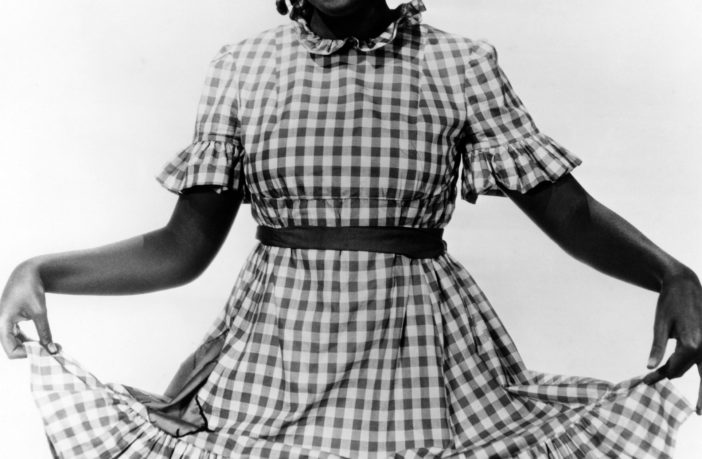Black America Web Featured Video
CLOSE
Source: American actress and singer Judy Garland (1922 – 1969) in blackface as Judy Bellaire in ‘Everybody Sing’, 1938. (Photo by Silver Screen Collection/Getty Images) / Getty
Halloween is a time for creativity and self-expression, a joyous occasion, where people of all ages transform themselves into a myriad of fun characters and personas. It’s a holiday that allows us to escape the ordinary and embrace the spooky. However, not all costume choices are harmless fun. Some can be culturally sensitive and have a dark history rooted in racism, perpetuating harmful stereotypes that can cause pain to marginalized communities.
Blackface has become an infamous example.
Historians believe that the racist practice began in the mid-1800s in New York. White performers would use burnt cork or shoe polish to blacken their faces as they performed at minstrel shows, according to the Smithsonian’s National Museum of African American History and Culture (NMAAHC).
Wearing ripped and tattered clothing, the white jesters would mock and mimic enslaved African Americans from the South, characterizing blacks as lazy, ignorant, superstitious, hypersexual and prone to thievery, the NMAAHC notes.
According to Historian Dale Cockrell, when Blackface began to seep slowly into the dark side of American history, the practice was one typically associated with poor and working-class whites who felt “squeezed politically, economically, and socially from the top, but also from the bottom.” They invented minstrel shows as a way to be seen as “a part of the majority.”
Thomas Dartmouth Rice, an actor born in New York, is believed to be the “Father of Minstrelsy.”
In 1830, Rice developed a Black stage character named “Jim Crow” that grew popular at minstrel shows across New York. During his performances, White would cover his entire face with burnt cork and foolishly mimic the drawl and vernacular of Southern African Americans. He exaggerated their behavior and became known for creating songs that perpetuate negative stereotypes about African Americans, according to History.
By 1845, minstrel shows became a booming sector of the American entertainment industry. Notably, Lithuanian singer and actor Al Jolson performed in Blackface in the 1927 film The Jazz Singer. Actress Shirley Temple was also filmed wearing the racist makeup in 1935’s The Littlest Rebel.
It should go without saying, that Blackface should be avoided at all costs. It’s disrespectful and serves as a painful reminder of the deep-seated racism that has plagued the Black community in the U.S.
Blackface isn’t the only costume that continues to rear its ugly head every Halloween.
Native American costumes have also been a recurring issue in North America. Every year adults and sometimes, children, are seen dressing up as a stereotypical “Indian” to celebrate the spooky holiday. The terrible costume usually consists of a headdress, war paint and other inaccurate depictions of Native American culture and communities.
During a 2019 NPR interview, Henu Josephine Tarrant, a New York-based artist and performer of the Ho-Chunk, Hopi and Rappahannock tribes, explained that Native American costumes reflect “a violent past” for people within the community. In the 19th century, many indigenous people were displaced and killed as white settlers moved west to claim territory.
“In real life during this time period, during all of these Dakota wars and these other wars and these removal acts and starvation and famine and tuberculosis, smallpox — I mean so many sicknesses and violence was attached to that time period — and as a reaction there were some Dakota and Lakota who didn’t know what to do,” he said.
“This is a really destitute time in history. And so what they did was they held ghost feasts and ghost dances.”
In the late 1800s, Native American community members wore ghost dance shirts to protect themselves against harm, according to the BBC. The beautiful garments were typically made with long feathers, buckskin and tassels to offer spiritual protection to those who wore them. Many Native American costumes sold today feature the sacred garment, but people do not understand the significance behind the powerful piece.
Joshua Hunt, a board member of the Lake Erie Native American Council and a member of the Cheyenne tribe, cautioned people against wearing inappropriate Halloween attire sacred to indigenous communities — especially the feather headdress.
“Those are given to people that have made large sacrifices for their communities. Native Americans see it the same way as Christians see the cross,” Hunt told Spectrum News in 2021.
“That’s something that’s given. That’s earned like a medal of honor. So when it’s taken and turned into a plaything, or a costume, it’s disrespected. No one would wear a medal of honor that didn’t earn it. Why are you dehumanizing a whole race of people? Why are you dehumanizing people? You shouldn’t be doing that.”
While Halloween is an occasion for creative expression, it’s essential to remember that some costume choices can be deeply hurtful to others. Many people and communities have spoken out against these practices, calling for greater cultural sensitivity and understanding. It’s crucial to remain vigilant and continue addressing these issues to build a more inclusive and equitable society where all individuals are treated with respect and dignity.
This Halloween and beyond, let’s make thoughtful and respectful costume choices that celebrate diversity rather than perpetuating harmful stereotypes.
SEE ALSO:
Breaking Down The Stereotype: Why Are Black People So Lazy?
Breaking Down The Stereotype: Why The ‘Black-On-Black Crime’ Myth Just Isn’t True
The post The History Of Blackface And Native American Halloween Costumes appeared first on NewsOne.
The History Of Blackface And Native American Halloween Costumes
was originally published on
newsone.com



